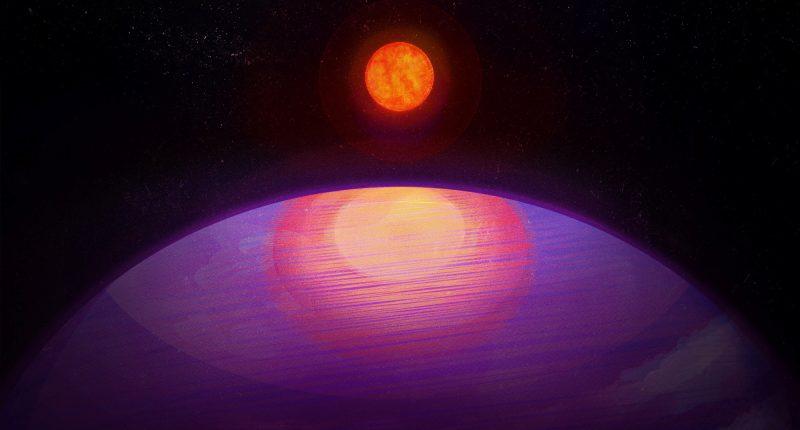A GIGANTIC planet deemed “too big for its own sun” has been found – and scientists say it “should not exist”.
The alien world – named LHS 3152b – is an exoplanet, which means it’s outside of our own solar system.
Normally when astronomers find planets, they’re predictably sized based on the star that they orbit.
But scientists say this newly discovered planet is 13 times heavier than Earth – with a much smaller sun.
This cold star is nine times less massive than Earth’s Sun, and 100 times “less luminous”.
“Imagine you’re a farmer searching for eggs in the chicken coop,” said Suvrath Mahadevan, an astronomy professor at Pennsylvania State University.
“But instead of a chicken egg, you find an ostrich egg, much larger than anything a chicken could lay.
“That’s a little how our team of astronomers felt when we discovered a massive planet, more than 13 times heavier than Earth, around a cool, dim red star, nine times less massive than Earth’s Sun, earlier this year.”
The type of star in question is a dim M star.
These are the most common stars in our Milky Way galaxy.
Most read in News Tech
And DC comics fans may know that Superman’s home world of Krypton orbited an M dwarf star.
It’s unknown if any superheroes are lurking on LHS 3152b – but it’s very interesting for another reason.
Making a planet
Planets form in giant disks of gas and dust.
They’ll pull together into a giant core – and then attract in more dust and gas in a process known as “core accretion”.
Normally a star with low mass should be surrounded by planets that also have low mass.
“A typical disk around such a low-mass star should simply not have enough solid materials or mass to be able to make a core heavy enough to create such a planet,” Professor Mahadevan said.
“From computer simulations our team conducted, we concluded that such a planet needs a disk at least 10 times more massive than typically assumed from direct observations of planet-forming disks.”
Scientists say they don’t know of any other massive planets orbiting so close to tiny M stars like this one.
Now researchers are examining whether stars like this could host planets capable of “supporting life”.
How to discover a planet
Some stars are very visible and easy to see.
And that means you can point a powerful telescope at them, and then wait for an orbiting planet to cross its face.
This “transit” is detected as a dip in the brightness of the star, and the regularity reveals how quickly or slowing the planet is orbiting.
But some stars – like the one hosting planet LHS 3152b – are so dim that they’re very difficult to see.
To deal with this, scientists at Penn State created a new tool to detect light from very dim and cool stars.
They pick up infrared light that can’t be seen with the human eye.
This tool was attached to the Hobby-Eberly Telescope in West Texas, which is designed to find planets in the “habitable zone” around stars.
It measures the tiny change in the speed of a star as a planet’s gravity tugs on it.
This allows exoplanets to be detected even when a star is very dim.











